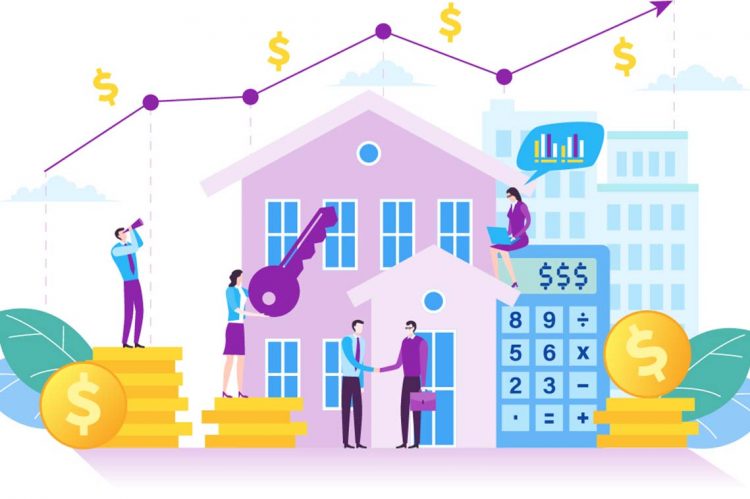The U.S. median rental price hit a new high—$1,827—for the 14th month in a row, according to the latest Monthly Rental Report from realtor.com® released this week.
And higher rents are increasingly cutting into households’ budgets for regular expenses and savings, according the portal’s Avail Quarterly Landlord and Renter Survey, also released this week, which further puts a spotlight on the affordability struggles reported by renters.
“April data illustrates the perfect storm of supply and demand dynamics behind the continued rent surge, from a low number of available rentals to higher for-sale housing costs forcing many would-be buyers to rent for longer than planned,” said realtor.com® Chief Economist Danielle Hale. “Renters are being left with few options but to meet higher rents and, in some cases, even offer above asking—whether they can afford to or not.
“Avail’s new survey shows rents are not only maxing out renters’ housing budgets but are the biggest strain on their overall finances, even as inflation drives up expenses across the board. For renters trying to stay on budget, making a list of must-have features is key. This will be especially important as, if recent trends continue, we expect the typical U.S. asking rent to eclipse $2,000 by August.”
April 2022 Rental Metrics – National
| Unit Size | Median Rent | Change over April 2021 | Change over April 2020 |
| Overall | $1,827 | 16.7% | 21.0% |
| Studio | $1,500 | 17.2% | 15.2% |
| 1-bed | $1,679 | 15.7% | 19.9% |
| 2-bed | $2,062 | 16.0% | 23.8% |
April rents maintain record-breaking run, despite annual growth cooling slightly
realtor.com®’s April data showed national rents maintained their record-breaking run that began in January 2021, despite posting a slightly smaller year-over-year gain than in March, according to the report.
The continued rent surge is attributed to the mismatch between rental supply and rising demand, largely from would-be homebuyers. Some of these aspiring homeowners are staying in the rental market for longer than they may have intended, due to intensifying cost pressures driven by both the longstanding housing supply shortage and more recent inflationary economy. If these trends continue, national asking rents will likely surpass 2022’s forecasted year-over-year growth projections (+7.1%) by end of year.
Additional key findings:
- The U.S. median rental price hit a new high of $1,827 in April, while the annual growth rate (+16.7%) moderated slightly from the March pace (+17.0%). Still, rents continued to rise at a double-digit annual pace, reaching 21.0% higher than in April 2020 right after the onset of COVID.
- Studio rents grew at a faster year-over-year pace (+17.2%) than one-bedrooms (+15.6%) and two-bedrooms (+15.9%). This is largely due to the ongoing rental market comeback in major downtowns where smaller living spaces are common, with studio rents up double-digits over April 2021 in all 10 of the biggest tech hubs, led by: New York City (29.1%), Boston (+27.4%) and Austin, Texas (+25.0%).
- In a potential reflection of shifting migration patterns during the pandemic, the five large markets that posted April’s biggest overall rental price gains year-over-year were in the Sun Belt: Miami (+51.6%), Orlando, Fla. (32.9%), Tampa, Fla. (27.8%), San Diego (25.6%) and Las Vegas (24.8%).
Avail survey finds renters are struggling to keep up with rising costs
With rental demand on the rise, landlords with limited available units are able to adjust asking rents on both new and renewing leases to reflect the increasingly competitive market. In fact, the majority of landlords surveyed by realtor.com®’s Avail reported plans to increase rental prices within the next 12 months.
This could mean further rental affordability challenges, with many surveyed renters already feeling the squeeze on their finances and savings, as inflation drives up the cost of everything from rent to regular household expenses.
- Among renters surveyed in April, 66.1% said higher rents and related household costs are their top cause of financial strain—ahead of other expenses like food and groceries (57.3%) and auto and transportation (50.8%).
- Higher rents are also limiting renters’ ability to save, with more than three-quarters of renters (76.1%) saving less each month than at the same time last year. The typical household surveyed reported being able to save just $50 each month.
- Of respondents whose rents have gone up on their current unit, 72.9% are considering a move to a more affordable rental. However, lower-cost options are dwindling, with renters who moved in the past year typically paying higher rents ($350) than they did previously. Those who are staying put are trying to cut costs, most commonly on entertainment (67.1%) and food and groceries (62.3%).
- Additionally, trends among surveyed landlords indicate that renters aren’t likely to see relief any time soon. Nearly three-quarters of landlords (72.1%) plan to raise the rent of at least one property this year, up from 65.1% in the January survey.
“Our survey data underscores how renters and landlords alike are feeling the squeeze of inflation and higher costs. For renters in particular, many may understandably feel caught between a rock and a hard place, but remember that there are resources that can help. Doing your research can go a long way in helping you prepare to navigate rent increases and their impact on your family’s finances,” said Ryan Coon, Avail co-founder and VP of Rentals at realtor.com®.
Renters grappling with higher costs can access free financial counseling through the Renter Advantage program, a collaboration between realtor.com®’s Avail, the National Foundation for Credit Counseling, the Housing Partnership Network, and Wells Fargo. Learn more here.












